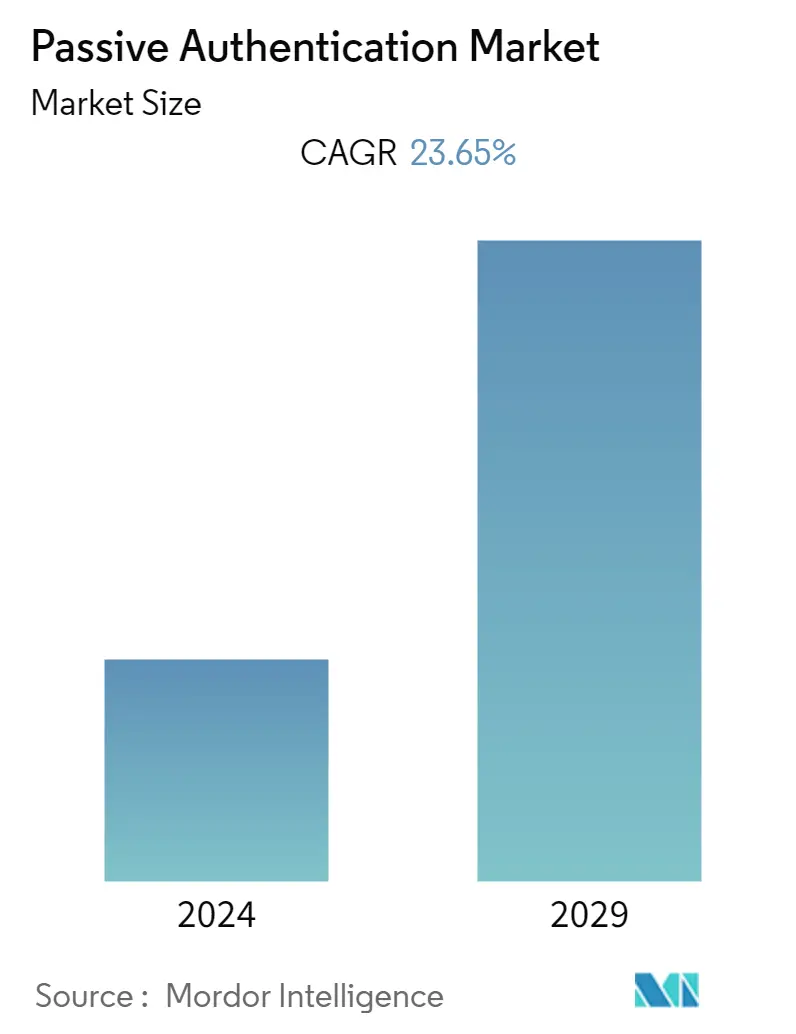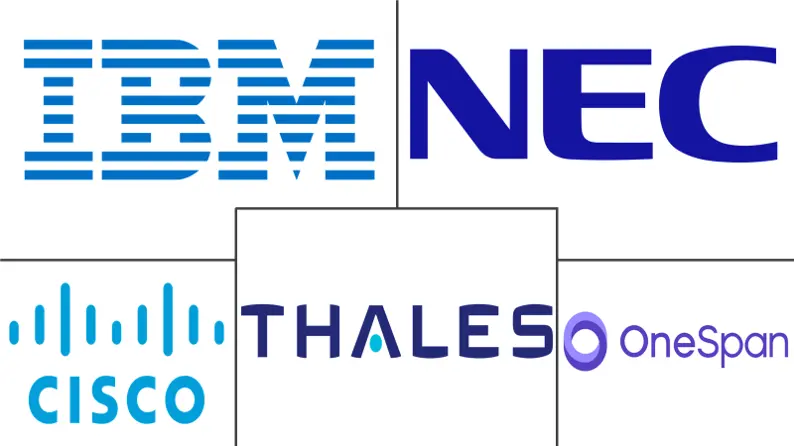Market Size of Passive Authentication Industry

| Study Period | 2019 - 2029 |
| Base Year For Estimation | 2023 |
| CAGR | 23.65 % |
| Fastest Growing Market | Asia Pacific |
| Largest Market | North America |
| Market Concentration | Medium |
Major Players
*Disclaimer: Major Players sorted in no particular order |
Need a report that reflects how COVID-19 has impacted this market and its growth?
Passive Authentication Market Analysis
The Passive Authentication Market is expected to register a CAGR of 23.65% in the forecast period from 2021 to 2026. Voice biometrics replace traditional and outdated security methods such as PINs, passwords, and answers to security questions, offering a more secure and friction-free way to verify identity in telephone calls and digital transactions. Passive verification involves listening to the speaker's voice while talking with an agent or a voice bot. This process usually requires a more extended period of speech to achieve a high-security verification score. Passive verification means a caller doesn't need to remember their account number or phone number, which is beneficial for some customers. However, some customers may have some security concerns if they think the call center agent hasn't asked for any proof of identity and completes their transaction without considering the security of the account holder. Passive Authentication even provides seamless Authentication to a user for network resources and internet access without entering user credentials multiple times.
- Active verification requires less speech, and it usually only takes 2-3 seconds of speech for high-security verification. Passive verification can be advantageous as it allows users to be verified while in conversation with an agent. Passive verification is also useful for fraud detection purposes. It will enable companies to continually monitor conversations in real-time to ensure that the person they are interacting with is still the authenticated speaker. Both active and passive voice verification provide different benefits depending on the use case. The ability to use both active and passive ensures that organizations and their consumers will get the best outcome from a biometric voice solution. Significant advancements occur in the research and distribution of typing biometrics because keyboards are incorporated in almost any device, making typing behavior the most widely available user biometric.
- In January 2020, TypingDNA, a behavioral-biometrics company, announced that it raised a USD 7 million Series A round led by Google's AI-focused venture fund called Gradient Ventures. TypingDNA has developed proprietary AT algorithms to authenticate users based on how they type. Through a simple training process of watching user keystrokes, the company can recognize further attempts from a specific user by matching them against their known account. This technology, called typing biometrics, could be useful for various applications such as Authentication, password recovery, fraud detection, and online education assessment to fingerprint users for more security than traditional forms of two-factor Authentication. Developers can use TypingDNA's API as a passive two-factor authentication option, password recovery task, or ensure that inputs are matched to a given user.
- The Capital One credit card data breach in 2019 resulted in 106 million individuals having their data compromised. And that is just the most recent incident in a long line of events that have left consumers' personal information vulnerable to scammers. Add to that the fact that most of the users practice alarming password hygiene. According to a LoginRadius infographic, 61% of users don't change their passwords for fear of forgetting them, and a staggering 70% of millennials use one or two passwords that are easy to remember across multiple accounts. And the worrying fact is that even those who recognize the dangers aren't taking the appropriate actions to protect ourselves. The challenges, risks, and attitudes combined with advances in the ease and accuracy of biometrics open the door for a passive way to authenticate instead of providing the details.
- In August 2019, ID R&D announced the release of the industry's first production-ready, wholly passive facial liveness detection capability, IDLive Face. Until now, facial matching systems required some active step by the user, whether smiling, moving lips, blinking, moving one's nose to follow a dot on the screen, or moving the camera. These active approaches to liveness bring significant friction to the user experience, which results in more inferior results, extra time, and inconvenienced customers. With the outbreak of COVID-19, multiple enterprises are transforming the security methods by defining next-generation user security experience with passive Authentication and control and trying to identify areas where the business can introduce AI/ML and automation to provide more frictionless user experience and security such as passive Authentication and context-aware computing.
